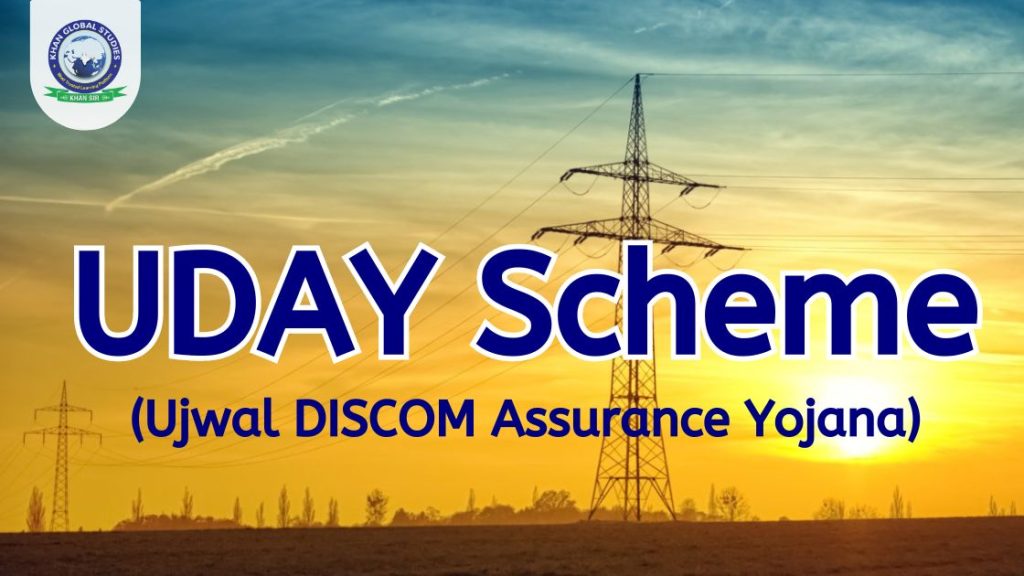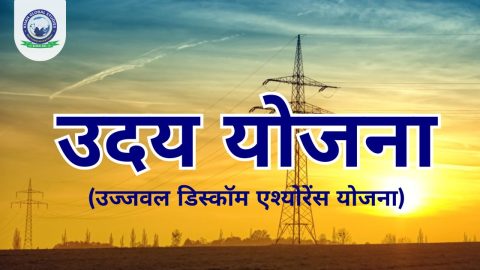The UDAY (Ujwal Discom Assurance Yojana) Scheme, launched in 2015, is a transformative initiative aimed at revitalizing India’s power distribution sector. Plagued by financial stress and inefficiencies, DISCOMs (Distribution Companies) needed to improve the country’s ability to provide reliable and affordable electricity. UDAY seeks to address these challenges and empower DISCOMs to deliver a brighter future for the power sector.
Understanding the Need of UDAY
Before UDAY, DISCOMs faced a vicious cycle of financial woes. High Aggregate Technical and Commercial (AT&C) losses – a combination of power theft and inefficiencies – resulted in revenue gaps. This meant DISCOMs struggled to pay power generation companies, leading to a build-up of debt and further hampering their ability to invest in infrastructure and improve services. UDAY emerged as a critical intervention to break this cycle.
Objectives of the UDAY Scheme
The scheme boasts a multi-pronged approach with several key objectives:
- Financial Restructuring: Reduce the gap between Average Cost of Supply (ACS) and Average Revenue Realization (ARR), essentially ensuring DISCOMs earn enough to cover their costs.
- Operational Efficiency: Implement measures like smart metering and infrastructure upgrades to minimize power losses and improve overall efficiency.
- Improved Power Delivery: Strive for a reliable, affordable, and quality power supply for consumers across the country.
- Institutional Strengthening: Build robust DISCOMs with improved governance and managerial practices.
Key Features of the UDAY Scheme
UDAY works through a collaborative effort between the Central Government, State Governments, and DISCOMs. Here’s a breakdown of its key features:
- Debt Restructuring: States take over a significant portion of DISCOM debt by issuing non-SLR bonds with a long maturity period.
- Operational Reforms: DISCOMs are mandated to implement operational improvements like smart metering, system upgrades, and energy-saving initiatives.
- Governance Reforms: Measures are taken to improve corporate governance practices within DISCOMs.
- Incentives and Penalties: States performing well under the scheme receive incentives, while those lagging behind face penalties.
How does the UDAY Scheme work?
The UDAY scheme incentivizes states by exempting state acquisition of DISCOM loans from Fiscal Responsibility and Budget Management (FRBM) limits for two years. Major components include:
- Increase in Domestic Coal Supply
- Rationalization of Coal Linkage
- Liberal Coal Swap Allowance
States will get access to coal linkage at announced prices and if they meet operational milestones, will receive additional or priority funding for programs of the Ministry of Power and Ministry of New and Renewable Energy.
Participating States and Discoms will have to sign an MoU with the Government of India and avail 50% of the loan outstanding as of September 30, 2015, by March 31, 2016.
Benefits of UDAY Yojana
Reduction in electricity cost is achieved through the following central assistance:
- Increase in Domestic Coal Supply
- Coal Price Cut
- Supply of Washed and Crushed Coal
- Excess Coal at Pre-Determined Prices
- Allocation of Coal Linkage at pre-determined prices
- Rationalization of Coal Linkage and Availability of Coal-Swapping Facilities
- Rapid Completion of Interstate Transmission Lines
- Power Acquisition through Transparent Competitive Bidding
- Additional priority funding through DDUGJY, IPDS and other programs
Impact of the UDAY Scheme
UDAY has yielded positive results:
- Reduced AT&C Losses: While the ambitious target of 12-15% by 2024-25 hasn’t been fully met, there has been a significant decline in AT&C losses.
- Improved Financial Health: DISCOM’s debt burden has shown signs of improvement.
- Technological Advancements: The scheme has encouraged the adoption of smart metering and other technological advancements.
However, challenges remain:
- Meeting Targets: Achieving the set financial and operational targets continues to be a hurdle.
- Coal Shortage: Coal shortages continue to disrupt power generation, impacting DISCOMs’ ability to meet targets.
- State Participation: Uneven participation by some states has hampered the scheme’s overall effectiveness.
The Road Ahead: Building on the Foundation
UDAY has laid a strong foundation for a more robust power distribution sector. Continued focus on financial discipline, operational efficiency, and technological advancements is crucial to achieving the scheme’s long-term goals. Additionally, addressing coal shortages and ensuring active state participation is essential for UDAY’s sustained success.
In conclusion, the UDAY Scheme represents a significant step towards a brighter future for India’s power sector. While challenges persist, the scheme’s focus on financial health, operational efficiency, and technological advancements paves the way for a more reliable, affordable, and sustainable power supply for the nation.





